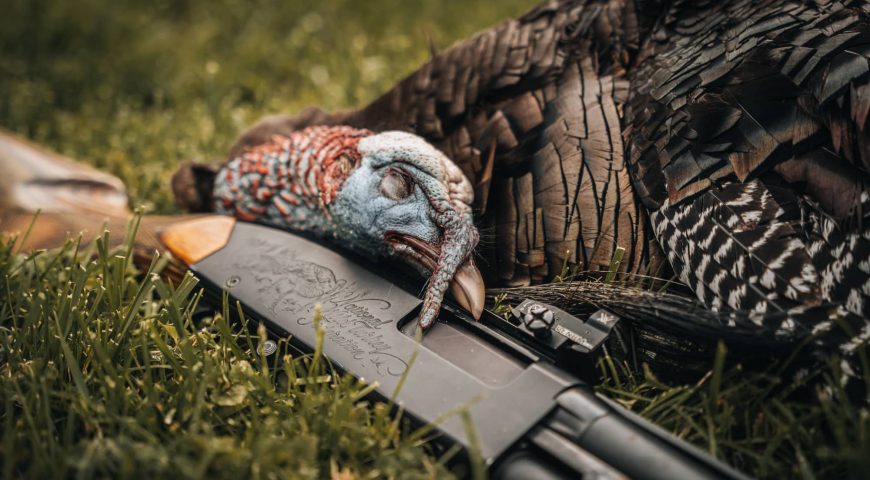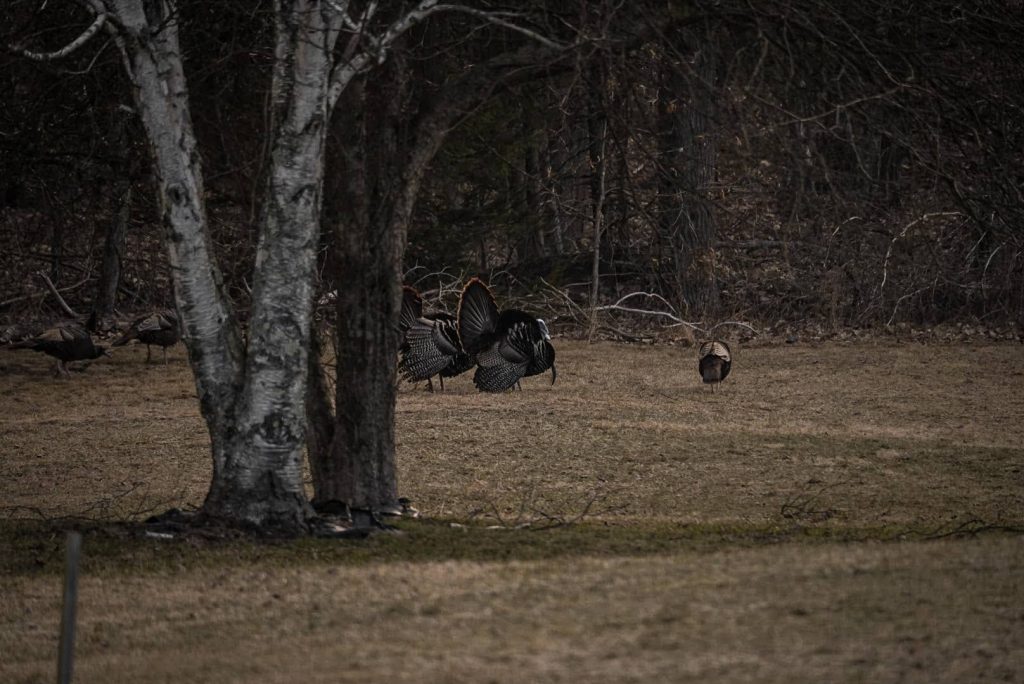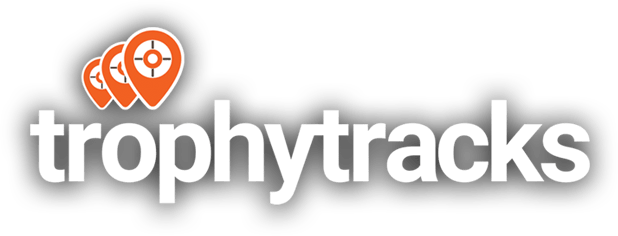
Shotgun Turkey Loads | Lead, Heavyweight, TSS
Every year turkey hunters take to the field in the spring season seeking gobblers. It’s an exciting time of year. Lots of money is spent on calls and investing in high-quality camo. Many of us pattern with different shotgun turkey loads to see how far we can accurately shoot, or just to verify we haven’t “lost it” in the off-season. We do all of this to get the best advantage and highest chance of success we can as we pursue these spring birds.
As a young hunter, I used to just grab a box of shells that fit my 12 gauge and had a turkey on it. Since then I have learned there is much more to shotgun turkey loads than a pretty bird on a box.
Admittedly, there are a lot of variables with shotguns and loads. It is all part of choosing the right hunting gear for your turkey hunt. The purpose of this article is to help you understand what the different loadings mean, the benefits associated with them, and talk a bit about shotgun gauges and shot patterning performance.
What is Inside a Shotshell?
Besides the plastic shell and the brass case and the center shot primer, there’s a lot going on inside the shell. Years of ballistics and testing have given us the loads that we use today. There are 4 basic items inside your shell, the primer, powder, wad, and pellets.
I’ll skip the crazy details and get to the practical side of this. For this moment I want to talk about pellet material and size.
Shotgun Pellet Material
Shotgun pellets historically would always be made out of lead. In 1991, the USA decided that lead shot posed some environmental problems and banned it from waterfowl hunting. So, manufacturers started to introduce materials like steel and copper. This is all great except those materials are lighter and do not carry as much momentum. Steel would come in at somewhere around 8 g/cc (grams per cubic centimeter) whereas lead was closer to 11g/cc.
In recent years, turkey loads have been made with heavy shot. These are mix of materials to get a weight of 12g/cc, and even more recently TSS loads come in at a whopping 18 g/cc.
At this point you may be thinking, “ok, there’s a bunch of weights I don’t understand, what does that mean to me?” A higher weight means more momentum and more penetration. It also means that the pellet will hold its energy and speed longer. This means you can shoot further at turkeys and not need to be as concerned about wounding the turkey for lack of penetration.
Shotgun Pellet Size
Turkeys are larger birds. This equates to a need for more penetration when the pellets make an impact. This means you need to choose a larger shot or heavier shot than you normally would for upland birds or other small game.
I don’t need to go through all the shot sizes and describe what they mean, but the bigger the number on the box, the smaller the pellets will be. So, if you see a box that says #9 shot, the pellets are significantly smaller and lighter than a 5 or 6 shot. A #9 shot is 0.08 inches in diameter whereas a #5 is 0.12 inches. As you can see there is a significant difference in mass.
The difference in weight determines the stopping power of the load. For this reason, manufacturers make turkey-specific cartridges.

Turkey Load Shot Sizes
Turkey loads are usually under one of three categories: Lead, Heavyweight (or Hevi), and TSS. Lead is the lightest and TSS is the heaviest. With the differences in material, you need to choose different pellet or shot sizes. We split up the categories to address each individually starting from least expensive and ending in most expensive.
Lead Pellets for Turkeys
Lead pellets being the lightest of the group need to have bigger shot size (a lower number). These are the least expensive cartridges in many cases and have been used for centuries. There have been lots of changes in how pellets are made, but these are true to the historical standby that has worked for so long. Every size has its pros and cons, but every size we will talk about kills turkeys every year. We recommend a size #4-7.
Some hunters love the #4 shot, but I have some hesitancy. The larger the shot, the fewer pellets can be packed into the shell. This means at further distances the spread of the pellets may completely miss the turkey. On the other hand, if one pellet hits the right spot with that much weight behind it, it will penetrate well.
The #5 and #6 lead, or copper-plated lead shot seems to be a sweet spot of weight and spread characteristics. They have enough momentum to be effective out to 40 yards and even 50 with the right choke on a setup.
The smallest recommended size on our lead list is #7. This is a good cartridge with great pellet coverage, but the pellets won’t pack as much energy or stopping power at longer ranges. Lighter pellets lose energy faster, which limits your effective range. I know for a fact that smaller shot has been used successfully on turkeys, but these are the best pellet sizes for lead.
Heavyweight Turkey Shot
Heavyweight turkey shot is made from an alloy of heavy metals. It is priced higher but may be worth a look if you are considering trying to shoot further distances. The heavier material carries its energy longer so it is more effective at long range. With the heavier weight, comes a different shot size recommendation. We recommend #4-8.
A lot of the information is the same as with lead, but the main difference is the effective range. The heavyweight turkey load enables you to shoot further distances and still have enough energy for lethal penetration. The heavier weight means you can have smaller and more pellets. This transfers into more hits on target and more stopping power.
For hunters that want to stretch out to the 50-yard mark and have a gun that patterns well enough, this load is one to think about.
TSS Turkey Load
We have come to the most technologically improved turkey load of this time. The TSS load carries over 50% more weight than lead pellets. This means the pellets can be smaller which equates to a longer effective range with more pellets on target. In comparison, a #9 TSS pellet has a similar weight to a #4 lead load. The weight of the pellets creates more momentum and better penetration further downrange.
We recommend sizes #5-9 TSS turkey loads. With the added weight of the pellets, there is not a significant reason to shoot a #4 cartridge. The metal alloy is harder than lead which prevents it from deforming like lead would when fired and on impact. This means the pellet is not only going to penetrate further because of its weight but also because of its shape.
The #9 load has so many pellets that it achieves great pattern coverage at longer range while still providing enough momentum to ethically harvest a bird. 60 yards is a reasonable range with a well patterned firearm, which is a great choice for stubborn public land turkeys.
Shotgun Gauges for Turkeys
Hunters use multiple shotgun gauges for turkeys. Some will go to the woods with a 410 and some prefer a 12 gauge. Neither is wrong when shooting effective distances. Larger shotguns will have noticeably more recoil especially when you jump over from a 20ga to a 12ga. Right now, at least in my hunting area of the USA, the 20ga and the 12ga are the most used. A 16ga shotgun is also a great choice with plenty of stopping power but does not seem as common.
Any size over a twelve gauge isn’t necessary for most hunters pursuing turkeys. The trade off of performance, shotgun weight, recoil, and shot availability makes the choice easier for people that may be on the fence. After a 12 gauge, as the gauges increase in size, the heavier it is, the more it will kick, and shot availability will be less.
12 Gauge Shotgun For Turkeys
The 12 gauge has become the primary turkey shotgun. It has a great amount of power and shot capacity. With huge 3 1⁄2 inch cartridges available and the newest technology in pellets, I have seen hunters patterning their shotguns all the way to 70 yards. The power of a 12 gauge will have no problems with a turkey.
The only con I can think of is the recoil and firearm weight. For young hunters especially, but even for some of the respected older hunters of our community, the 12 gauge can be a lot to handle. For regular shooters and people that have better gun control, a twelve gauge is comfortable and performs well. The positive is huge amounts of rounds to choose from and great range capability.
16 Gauge for Turkeys
The sixteen gauge is a very capable cartridge for turkeys. I have personally harvested multiple turkeys with it. The 16 gauge is not as popular as the 12. I think this is for one primary reason: shot availability. The sixteen gauge has less available shell options and overall receives less attention than the 12 and 20ga.
The benefit of a 16ga is low recoil and a relatively lighter shotgun. Newer 12s are being manufactured with lighter and lighter materials, but overall a 16ga needs less material and barrel mass which reduces weight. If you have a sixteen gauge use it. It has plenty of power.
20 Gauge for Turkeys
The 20ga has become a go to shotgun for beginner bird hunting and turkey hunting in general. While you will see some adult hunters using a 20, it is much more popular for young kids or hunters that are new to the sport. There are multiple great loads available for this shotgun.
When paired with a good load and the appropriate choke, the 20 ga has plenty of power and energy on impact.
Using a 410 for Turkeys
The 4-10 is another load worth mentioning. Like the 20ga and 16ga, it offers good performance at a lighter weight. It does not have near the powder loading of a 12ga, but overall it is a useful option when looking for a lighter gun with significantly less recoil. Use heavier pellets (#4 or #5) to ensure better downrange momentum and penetration.
Turkey Load Performance
One turkey load may perform great with one shotgun and not perform well out of another. This is why it is important to shoot a few different ones and pattern your shotgun turkey loads at multiple distances to measure performance.
One of the biggest factors to shotgun patterning is the choke used. Shotgun choke is sometimes adjustable: a new choke tube can be fastened into the end of your barrel that will either widen or tighten the spread of pellets as it leaves the barrel.
If you are set on a particular shotgun round, changing the choke will be a practical way to modify your patterning performance. Some shotguns do not have this option, particularly on older models, so the only way to change the pattern is to change loads or replace the barrel.
It is generally agreed that inside of a 10-inch diameter circle you want 100 pellets. You will also see that four pellets are required in a turkey’s head and neck for a clean kill in the woods. All this goes to say that the number is subjective to the hunter. You should ask yourself what you are willing to go hunting with. Do you want only four pellets in the neck of a gobbler or do you want to be supremely confident that when you squeeze the trigger you will make an ethical harvest?
Want a way to keep track of which shotgun turkey loads perform the best? TrophyTracks is more than just a hunting journal. The app can be used to log performance notes and take pictures of the best turkey loads for your shotgun. Learn more at TrophyTracks.com.
Last Thoughts
As you look at all the turkey load options you will see huge price differences and lots of different numbers. This article was made to help hunters understand what some of those numbers mean, and the performance that the different shells will offer.
Looking forward is always easier than looking backward and wishing we knew more information after having a heartbreaking hunt. Find a few comparable shotshells in your budget and pattern your shotgun with them. After seeing how the cartridges perform, make your choice and stick with that round for the season. A bunch of mixed shells means unpredictable results. Go out confident, and come home successful!
Guest Post by Evan Grimm
Evan Grimm is an outdoor content writer that dives deep into topics to produce informative and practical content. He is a TrophyTracks user and contributor, the owner of ETHIC Digital Products, and is heavily involved in non-profit ministry where he and his family now reside in Alaska.


Comments are closed.